Parma are a team that experienced a huge improvement in terms of performance over the last couple of years. Coming from Serie B and securing a spot in the middle of the Serie A table for two consecutive seasons has been an unexpected achievement which shows their vision and motivation to improve even more and find a spot in the top 10.
Having a new coach in the face of Fabio Liverani is a new adventure for the team that could help them make the next step in their development. But is also scary because they’re jumping in the unknown again after playing under Roberto D’Aversa through three levels of Italian football.
This tactical analysis in the form of scout report will dive into Parma’s tactical traits from last season and also see what are the tactics the new manager could bring to Stadio Ennio Tardini.
Formations and squad
Parma’s most used formations throughout the 2019/20 season were 4-3-3 and 4-3-1-2. Roberto D’Aversa relied on a balanced approach with rather deeply sat four-men defence and a lot of movement and creativity in attack.
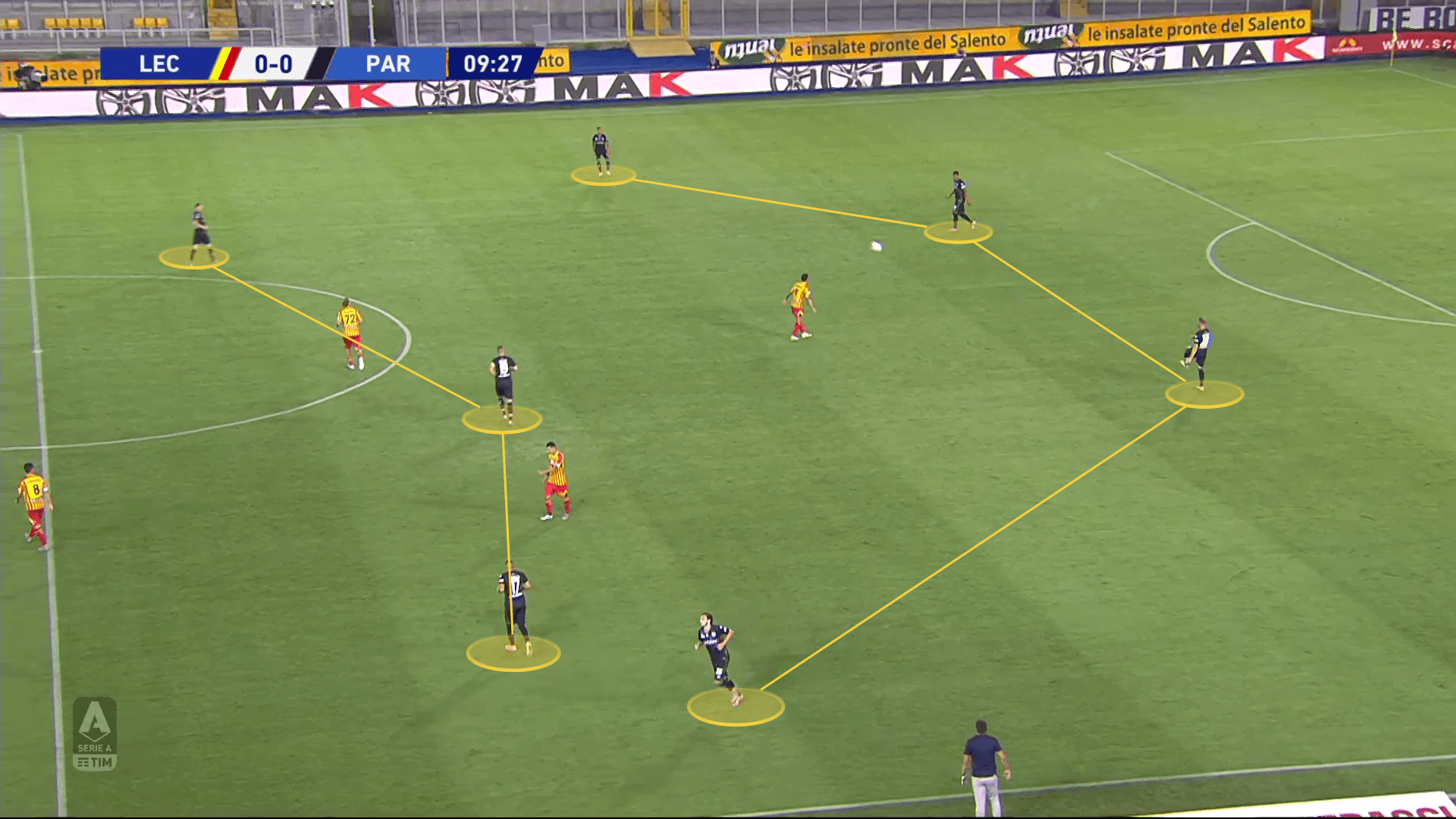
That might be very suitable for the new manager Liverani to implement his approach since he used similar structures at Lecce last season. Although this didn’t bring him a lot of success he will most definitely stick to the four-man defence, especially after getting relegated with Lecce due to their poor defensive performance. Parma’s experienced some defensive difficulties towards the end of the season too, which means the new coach needs to focus on their actions during transitions and also in their defensive third.
His vision includes a midfield three too although the team’s structure in possession might change based on the available players upfront. In both coaches’ strategies, one of the midfielders stayed deeper and served as a pivot while also providing additional support at the back.
One of Parma’s main players in attack Dejan Kulusevski will most probably join his new club Juventus which leaves the team in a difficult situation, being forced to restructure in the final third and look for new ways to expose the opposition.
There is a lot of uncertainty around their squad and how they’re going to look in the new campaign, especially with some of the players being rumoured to leave with Inter having interest in them. Their top goalscorer Andreas Cornelius might head back to his parent club Atalanta and leave Parma in struggles while they try to adjust to the changes.
Ball progression and movement
Parma are not a possession-based side, they have averaged 333.32 passes per 90 last season with a rather low accuracy percentage, which had affected their build-up and forced them to use direct play more frequently with the help of a pivot in the midfield.
They do that in an effort to avoid losing possession in the central areas since they have difficulties in holding on to the ball for longer periods.
Whenever they are not using long balls to reach the final third, they tend to use the flanks for creating their attacks and finish them with movement in the half-spaces. Kulusevski’s presence out there will be missed since he was the main creative force supplying his teammates with through balls and key passes, apart from being a direct threat.
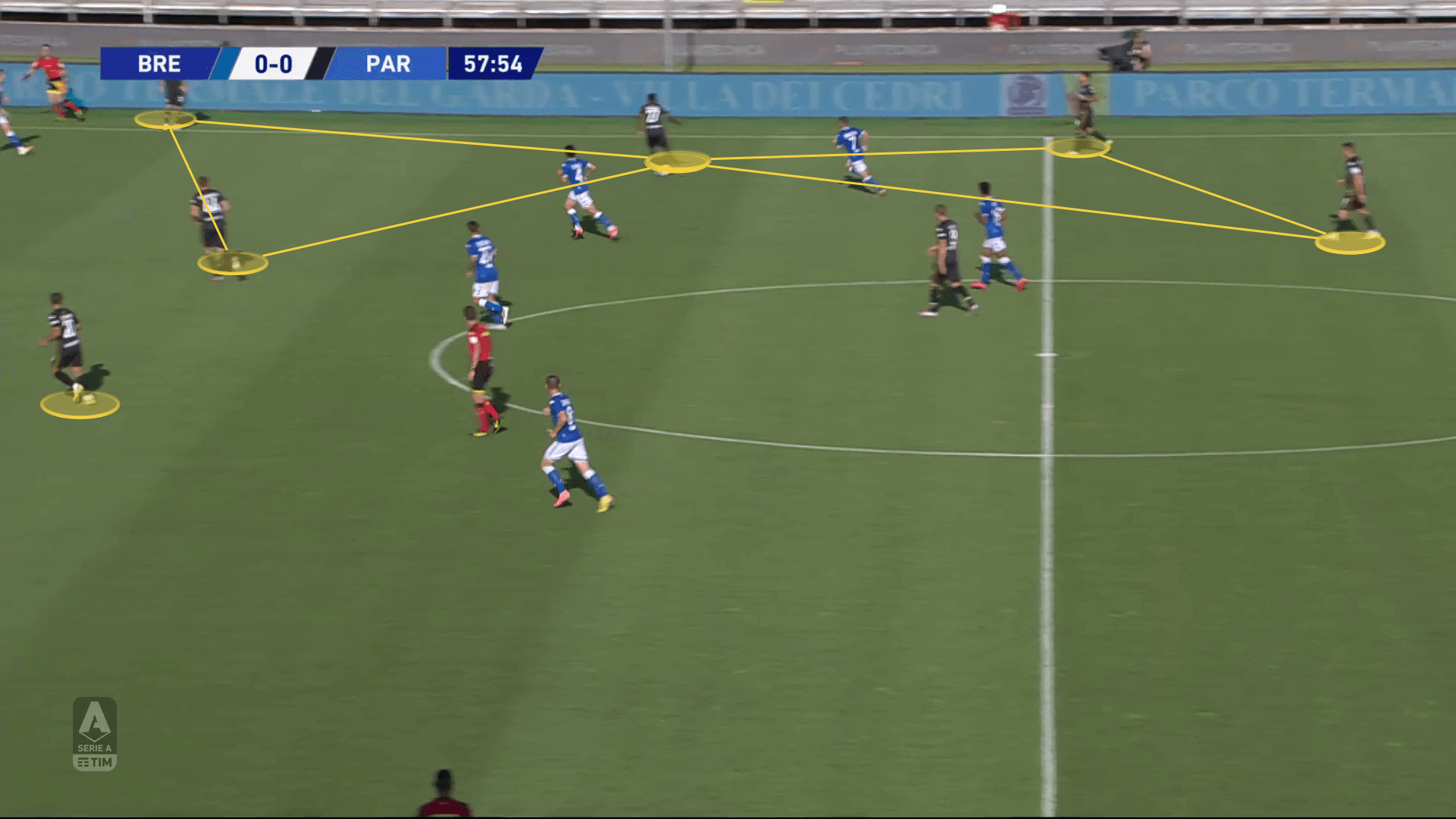
Attacking style of play
Despite their defensive problems, Lecce had an attacking approach under Liverani, which could also fit Parma well. He wants to bring balance by building a strong attacking team, who can defend well and concede less.
Lecce a lot more successful attempts on the goal from distance than Parma who also tried to shoot from outside the box quite frequently but the lack of precision and strong decision-making ruined their plans.
One of Parma’s main attacking traits under D’Aversa was their counter-attacking abilities. They have scored multiple goals thanks to their counter-attacking efforts, and that’s when the team showed a good balance between the lines and smooth transitioning. Then they tend to take advantage of the opposition’s defensive mistakes and catch them off-guard. Kulusevski was one of the key figures in these actions, supporting the team with his speed and attacking flair, although a lot of Parma’s success on a counter hides in the whole team’s movement.
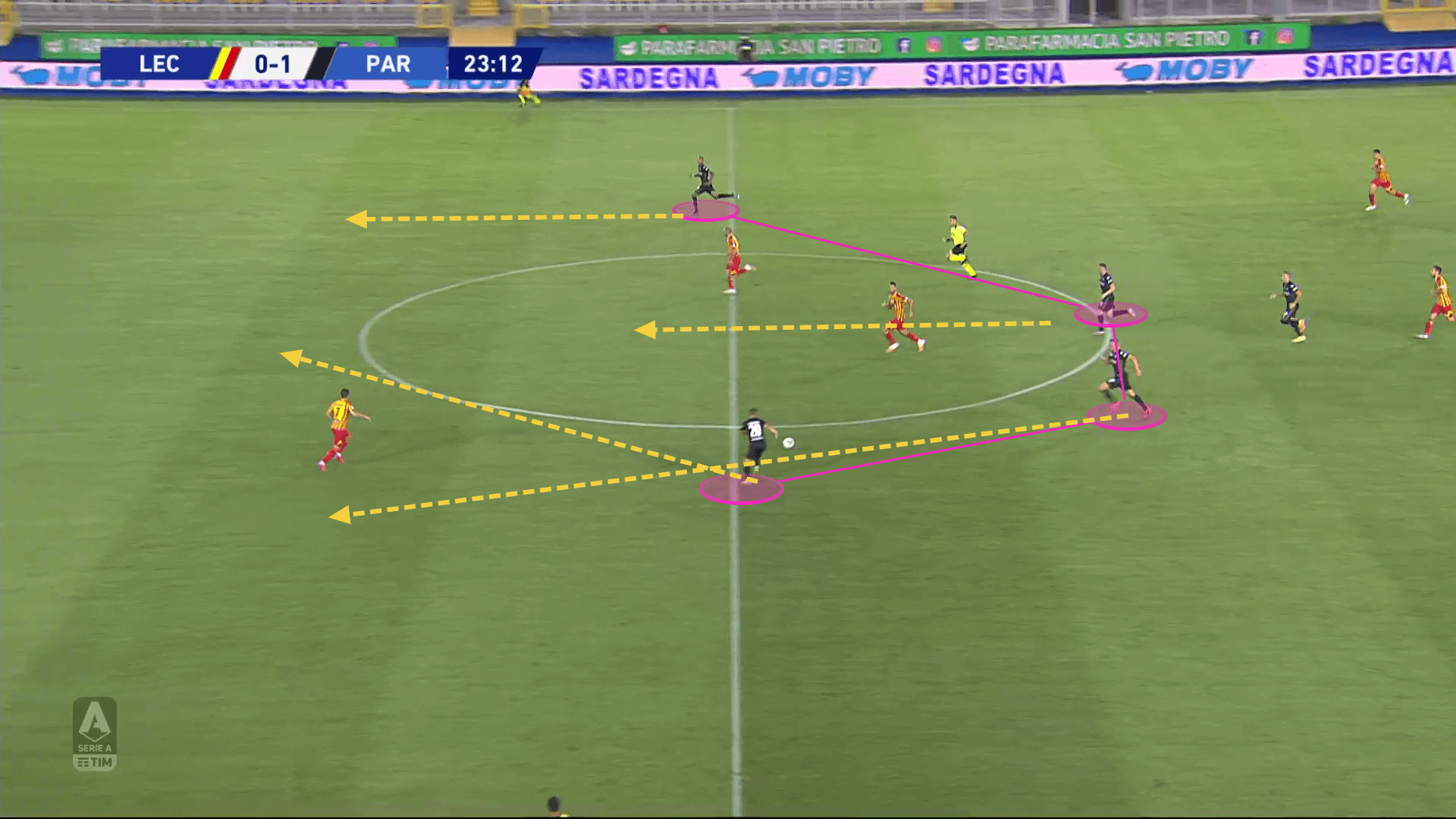
That’s something the new coach needs to stick to, otherwise, the risk of decreasing their chances on goal is huge. Parma weren’t the most creative when it comes to delivering the ball to the key areas through crosses, which has definitely affected their attacking performance. That’s mainly due to the fact they lack players with strong crossing abilities that could finish off their efforts.
Liverani might try to install this into their routine if he finds the right players since at Lecce they were heavily relying on crossing attempts.
They also need to focus on creating more chances using through balls and smart passes. None of their regular starters in midfield have very strong passing abilities, which affects their actions in the final third. While playing in a 4-3-3 or 4-3-1-2 Parma most frequently used a pivot to distribute the ball further and bypass the press, which was not always effective due to the lack of support by the other players.
Due to their low number of final third passes, they relied on a lot of movement by Gervinho in the advanced areas. He would use his dribbling abilities to pick up the ball and create chances for his teammates or provide a direct threat.
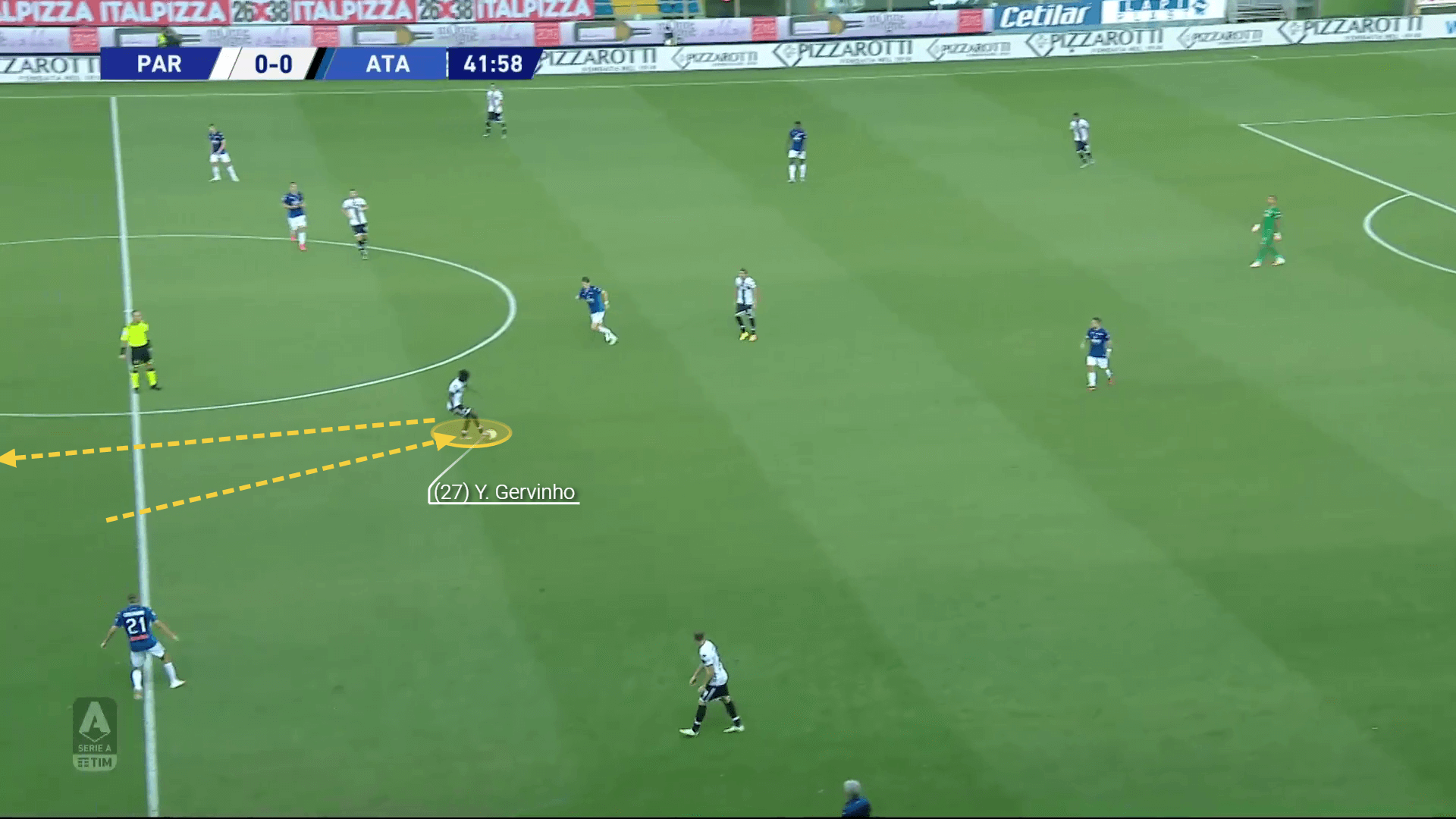
Defensive style of play
Parma were performing quite solidly in defence before the lockdown. They had managed to bring balance between the lines, mainly due to the defending abilities of their midfielders. All of them were focused on ball interception and pressing which was one of the reasons for their high number of counters on average (4.82 per 90).
What helped them in their defensive actions was their aerial performance. Something that will be much needed throughout the new season too. Due to their success rate in the aerial duels, they have managed to stop many dangerous attacks by gaining back possession midway and stopping their opponent’s direct play efforts.
Their 51.4% win rate has allowed them more freedom, although they did often fail to use these abilities when defending in the box. In their last few games, they fell victim of inaccurate actions in the penalty area, which affected their defensive record. They should improve on their marking strategy and accuracy when defending set-pieces since that’s how many of their goals last season came
Liverani insists on using four-man defence but what is going to be more important is keeping the continues support by the midfield line. Depending on their front three, Parma could use their forward players to apply high press and disturb the opposition build-up more frequently in efforts to decrease the pressure on the backline.
Although their strategy is to stay deep and invite pressure to their own half, Parma have difficulties defending against skilful players and that’s most evident when defending in the half-spaces and when trying to stop the opposition from sending through balls. This forces them to dive into challenges which often are unmeasured and committing a lot of fouls.
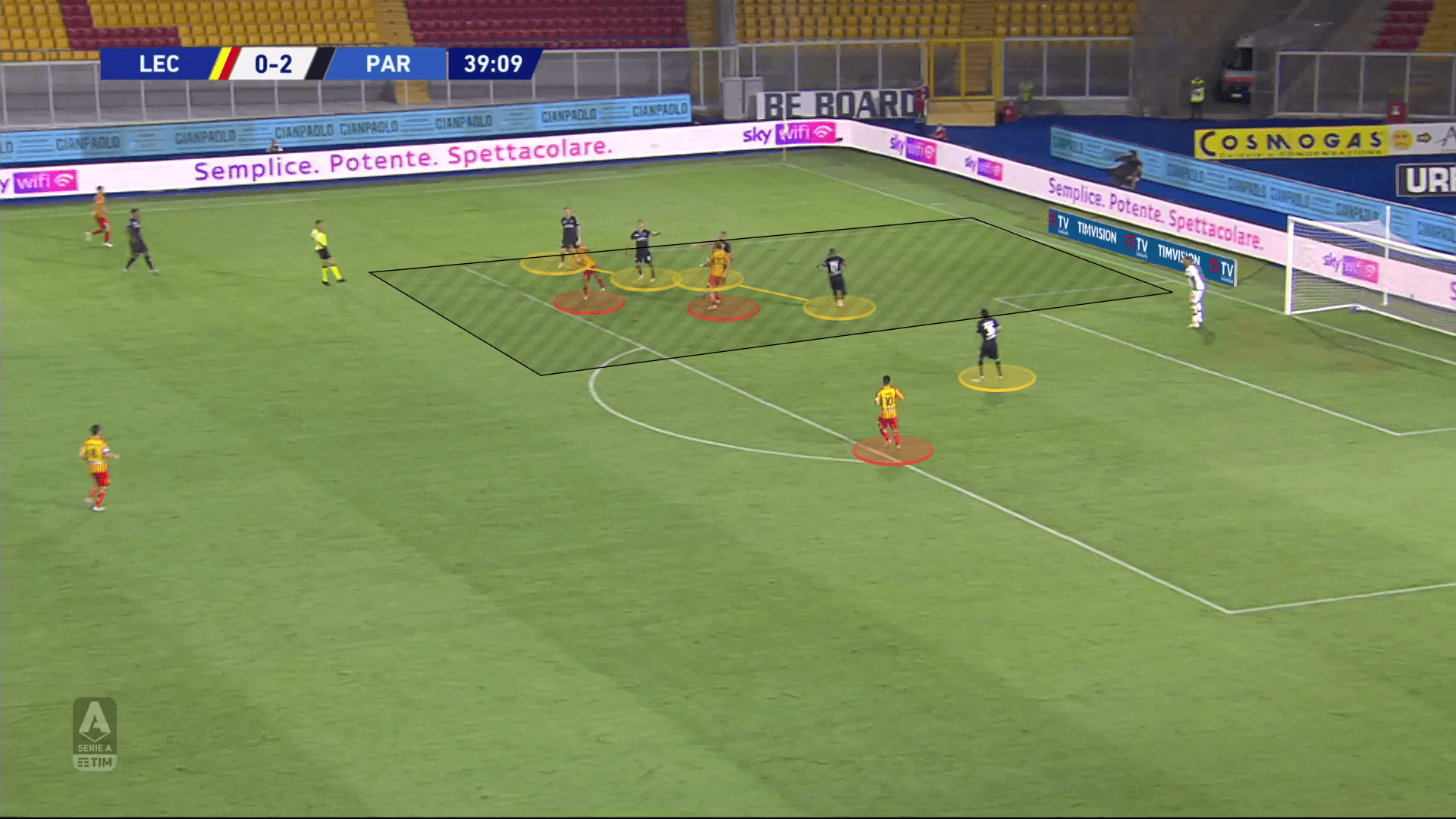
Areas for improvement
Something Liverani needs to work on is bringing in versatility in attack. They need to build different strategies based on the opposition’s approach to be able to penetrate, otherwise, they will often get stuck in midfield in aim to bypass the press and will have difficulties against well-structured low blocks. This means they need to have more movement in the midfield for opening the passing lanes and providing more options upfront.
The other challenge both for the coach and the players will be building defensive stability. They need to focus on their performance when defending set-pieces and also on their marking and movement in the defensive third due to the high risk coming from inviting pressure to their own half. Staying so deep was part of their counter-attacking strategy and if the new coach can adjust this approach in the absence of Kulusevski, they will continue to expose their opposition confidently.
Conclusion
Parma is definitely a work in progress and it will be interesting to see if the new coach has done his analysis and has a plan on how to bring balance between the lines and increase their creativity. Sticking to some of their old traits might be a winning strategy but implementing his vision and attack-minded approach could make the difference to better performance.



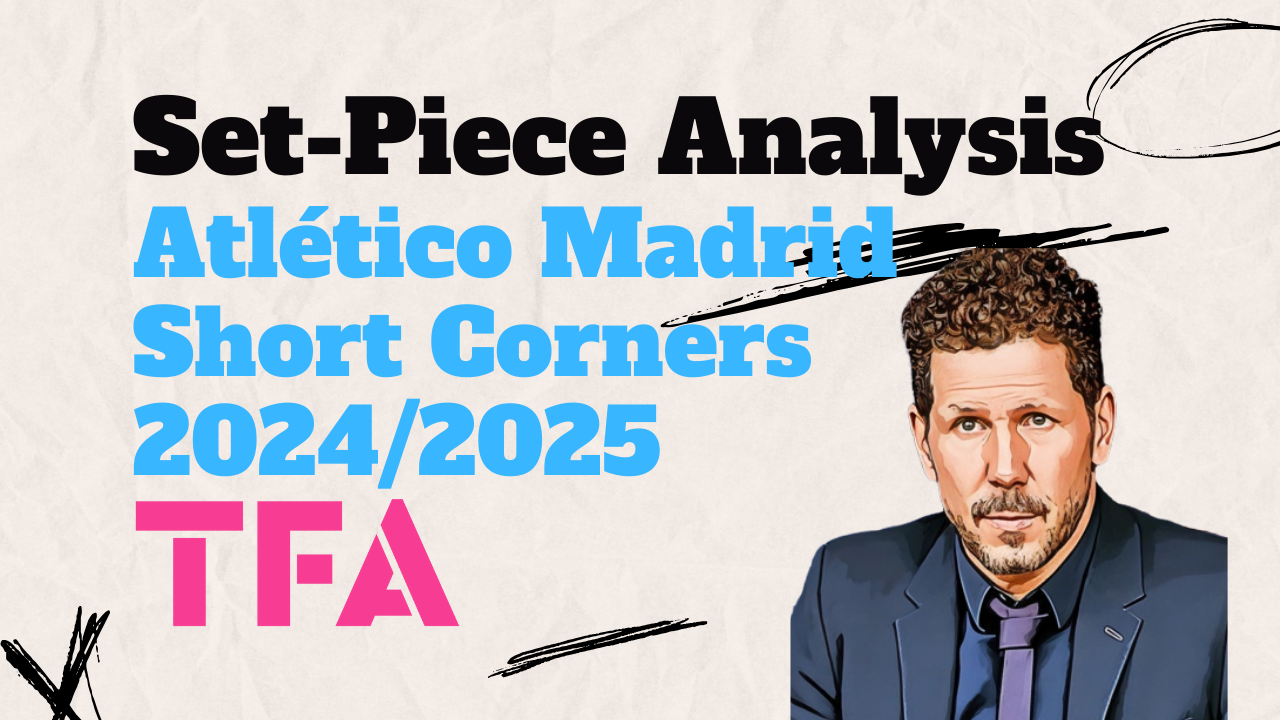
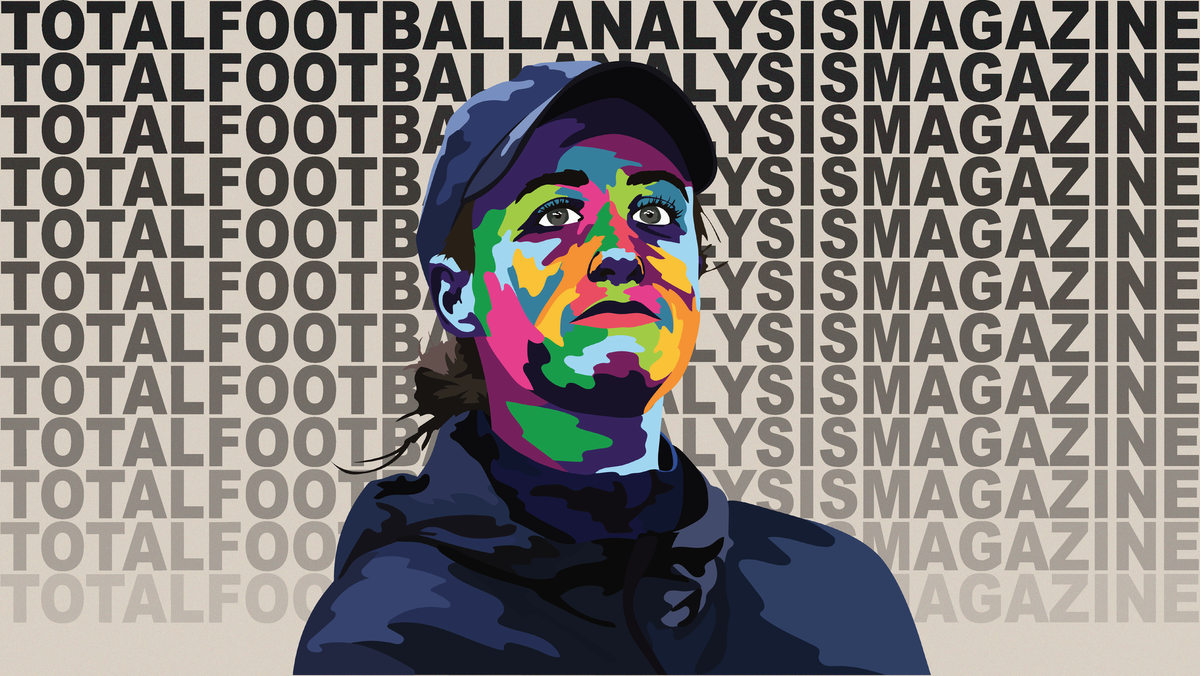
Comments